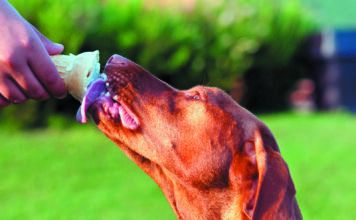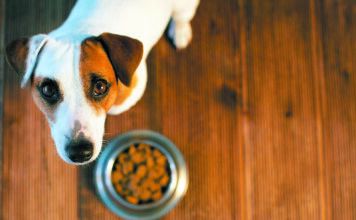Dear Doctor
Letters to Tufts Veterinarians - Is the percent ash in the diet correct?
Byproducts and Additives and Synthetics, Oh My!
Pyridoxine hydrochloride, poultry byproduct meal, DL-alpha-tocopherol acetate. No wonder some people get freaked when looking at the ingredients lists on dog food packages. The word combinations sounds straight out of a laboratory run by Jekyll and Hyde. A lot of customers would much rather see terms like holistic and human grade. …
A Homemade Dog Food Diet or Store Bought?
The team of scientists, all veterinarians, analyzed 200 recipes for homemade dog food found in pet care books, on websites, and elsewhere and found that 190 of them (95 percent) had at least one essential nutrient in concentrations that did not meet official standards for healthy dogs. Almost 170 of the recipes (more than four out of five) had multiple nutrient deficiencies. The results were reported in the prestigious Journal of the American Veterinary Association.
A Reduced-Sodium Diet When Your Dog is Diagnosed with Heart Disease
Your dog is diagnosed with heart disease, so your veterinarian says to put him a on a lower-sodium diet. But how do you decide? As Your Dog reader Beth Acikgoz of Boca Raton, Florida, told us in reference to her 12-year-old shepherd mix Bob, who was diagnosed with heart disease last year, I have been trying to feed him a lower-sodium diet, but it is very difficult to find sodium content listed for any…
Probiotics For Dogs with Sensitive Stomachs
When Dr. Weese analyzed 25 canine probiotics available in regular retail outlets, 10 did not even list the bacterial counts in their merchandise. Of the 15 that did, only one in four actually contained what the label said. Some products mentioned that they contained bacteria that dont exist; that is, they made up or misspelled bacterial names. Other problems: no growth of the bacteria supposedly in the supplements, bacterial counts that were too low to effect any beneficial change in the gut, and no expiration date. In the end, only two products out of the 25 met the criteria Dr. Weese looked at for quality control. His research was peer reviewed and published in the Canadian Veterinary Journal.
How do Probiotic Manufacturers Get Away With Their Health Claims?
Even some of the better made probiotic products on the market come with claims that they will maintain your dogs digestive balance, promote intestinal and immune health balance, and reestablish healthy intestinal balance. How can they get away with that if the evidence for probiotics beneficial effects is so scant? …
How to Choose a Food for Your Senior Dog
Walk into a pet food store, and youll find no end of dog foods enticing you with large, eye-grabbing lettering beseeching you to buy the product for your aging pet. Some of the claims are a cinch to spot as bogus. One senior dog food, for instance, says its farm-grown pumpkin is easy to digest for sensitive stomachs. We had to laugh. Would growing pumpkin in a backyard rather than a farm make it more difficult to digest?
How Do Manufacturers Get Away With Their Claims?
Only one claim is allowed on dog food. It has to do with improved oral hygiene because of a foods positive impact on plaque and/or tartar control. (Look for a seal from the Veterinary Oral Health Council, or VOHC.) All other health claims on dog food packages are illegal. So how do manufacturers get away with such label claims as the optimal blend of calcium, phosphorus, and essential vitamins to help maintain the bone health…
Do Rawhide Chews Cause Weight Gain in Dogs?
Q I am doing my best to control the weight of my dog, who loves to eat. One of the treats she enjoys is rawhide.
Any Kernels of Truth to Claims That Corn Is Bad for Your Dog?
Google corn-free diet for dogs, and volumes of information will come up on why corn is detrimental to canine health. But the claims fall far short of the truth. Indeed, corn has commonly been included in dog foods for decades, and dogs are only getting healthier and living longer. Herein, we separate the science from the buzz. …
Using a Feeding Tube When Your Dog Won’t Eat
The issue of insufficient calories becomes even more critical for a sick or injured dog than for a healthy dog. A healthy animal whos not eating enough can at least compensate for the lack of food in the short term by turning to fat stores for calories. But a dog who is ill or injured undergoes what is known as stressed starvation, meaning that instead of using fat stores for nourishment, his body keeps using protein stores from muscle, which results in a loss of lean body mass that can make him even sicker, adversely affecting wound healing, immune function, overall strength, and ultimately, his prognosis.Fortunately, a well-outfitted veterinary hospital can equip your dog with a feeding tube that allows food to bypass the mouth.
Other Routes of Food Administration
If a dog who cannot eat by mouth is sent home, it may be with either an E-tube or a G-tube, that is, a tube through which food can get to his esophagus or his stomach, respectively. But sometimes dogs who will be off their feedings only for the days they will be in the hospital are given a different type of apparatus to administer meals. …









